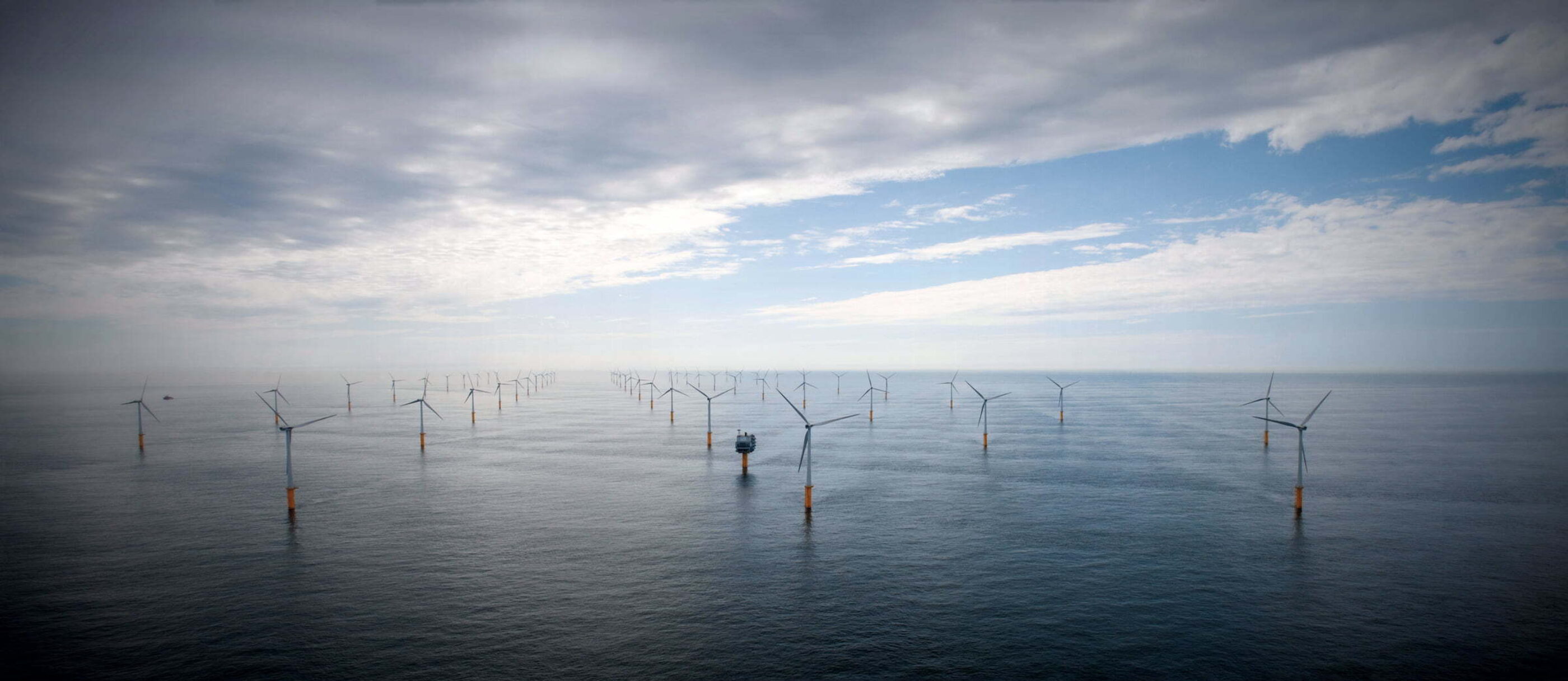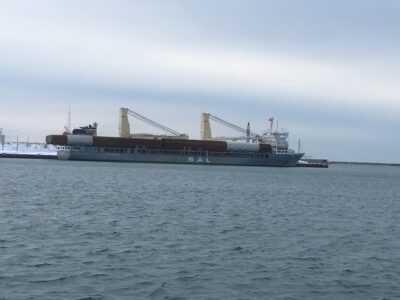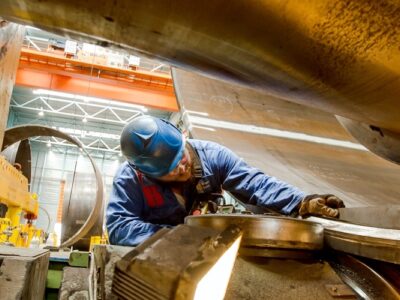Q&A
Wind energy is energy that is recovered from the kinetic energy of air (wind) for conversion into usable form. In the past, wind energy was directly converted into mechanical work by windmills, e.g. to grind or to pump water. Since the mid 1900s, wind energy is primarily known as the electricity generated by a wind turbine, often in a wind farm.
A wind turbine or windmill can convert wind energy into electrical energy. The rotor blades, or vanes, on the turbine are pushed upwards by the wind, creating a rotating movement. A generator then converts this movement into electricity.
The more modern wind turbines have three rotor blades (vanes). The point at which the blades meet is known as the rotor. The wind causes the entire assembly to rotate.
The rotor is connected to a nacelle, which is the housing above the mast. A special motor known as a ‘yaw motor’ ensures that the nacelle is always positioned so that the blades are aligned to the wind. In order to determine the correct direction of the nacelle, a weather vane is installed at the top of the wind turbine to constantly measure the direction of the wind.
The nacelle accommodates a generator, which is a large dynamo responsible for converting the rotary movement of the rotor into electricity. In addition, magnets are also used, and there are a number of different ways of using them. Some wind turbines employ the ‘direct drive’ principle, which means that the generator is driven directly by the rotor and the speed of rotation of both the generator shaft and rotor shaft are identical. On other wind turbines, the generator is driven by a vertical shaft and a gearbox. The gearbox upwards regulates the relatively low speed of rotation of the rotor, as the generator in these types of wind turbine requires a higher speed to generate electricity.
The generator is connected to a transformer, which converts the low voltage obtained by the generator into high voltage.
The higher the wind turbine, the more wind the blades will capture and the more energy can be generated.
A monopile is a foundation tube for offshore wind turbines. This type of foundation is typically used for shallow to semi-deep water depths, to a depth of around 60 metres. It comprises a single steel pile, which is driven into the ground with a hydraulic hammer.
The monopile is a popular solution for supporting offshore wind turbines. It takes the form of a tubular-shaped structure and is relatively straightforward to design and produce.
The main objective of a monopile is to support the wind turbine and to transfer the wind loads to the ground. In addition, the monopile needs to satisfy a number of other requirements – the monopile will experience wave loads, must be corrosion-resistant, etc. Each monopile is unique, and its design is determined by the wind turbine’s position in the wind farm.
The thickness and diameter of the pile will usually increase with the depth of the water in which it is placed, and with the size of the wind turbine. The monopile is the most commonly used foundation for offshore wind turbines.
The length of a monopile is determined by the depth of the water and the conditions of the sea bed. The maximum length of a monopile is currently 120 metres.
The largest monopile currently in use, the ‘XL’ monopile, has a diameter of more than nine metres. The possibilities for producing larger wind turbines are currently being researched, and these will necessitate next-generation ‘XXL’ monopiles.
A jacket is a supporting structure for offshore oil and gas platforms, and for wind turbines.
It comprises multiple piles that are driven into the sea bed and connected to one another by linkages. The wind turbine is then mounted on top. The size of the jacket depends on the depth of the water and the turbine.
The four longest tubes at the corners of the jacket structure are the jacket legs. The piles used to anchor the jacket structure in the sea bed are the pin piles.
A connecting piece is often fitted between the monopile and tower of the offshore wind turbine, which is known as a transition piece. A transition or connecting piece is used for almost all monopile foundations. A transition piece comprises a support tube and secondary steel or concrete elements and is installed onto the monopile by means of a joint of cement or a flange with bolts.
A monopile comprises entirely steel rings, or ‘cans’, that are welded together to form a tube. The production process of a monopile starts with a flat sheet of steel that is rolled to form a half shell or complete can. A can is produced from one or two pieces of steel, depending on the diameter of the tube. If two pieces of steel are used, the two half shells are firstly merged to form a single can. This is done with a welded ‘longitudinal seam’, a weld seam that closes the ring. The cans then need to be welded together with ‘round seams’, the weld seams that connect the separate cans together to form a tube. This is largely an automated process, carried out by a four-headed welding machine. Once the tube is complete, it is given a protective coating.
The overall size and weight pose a challenge to installation, in terms of the lifting capacity of the vessels and in terms of the pile-driving hammer. The conventional installation method for monopiles is to drive the piles into the sea bed with a large hydraulic hammer.
The problem with this method is the underwater noise that it creates, which could have an ecological impact. The energy required for the pile-driving operations is determined according to the soil conditions and the diameter of the foundation. This energy is relevant when it comes to forecasting the effects of the underwater noise.
To reduce the underwater noise, vibrating could be a viable alternative. There remains, however, uncertainty as to the effects of the installation method on the density of the ground and the subsequent stability of the pile. Info GROW driving driving of piles (GDP).
Vibrators mounted to the top of the foundation pile, attached to a crane, can drive the foundation pile into the ground through vibration. As the pile slower lowers into the ground, the vibrations ensure that the pile sinks down under its own weight.





